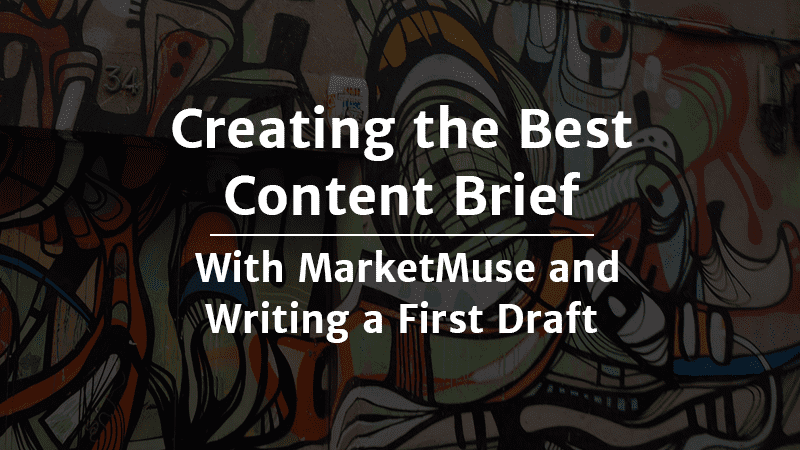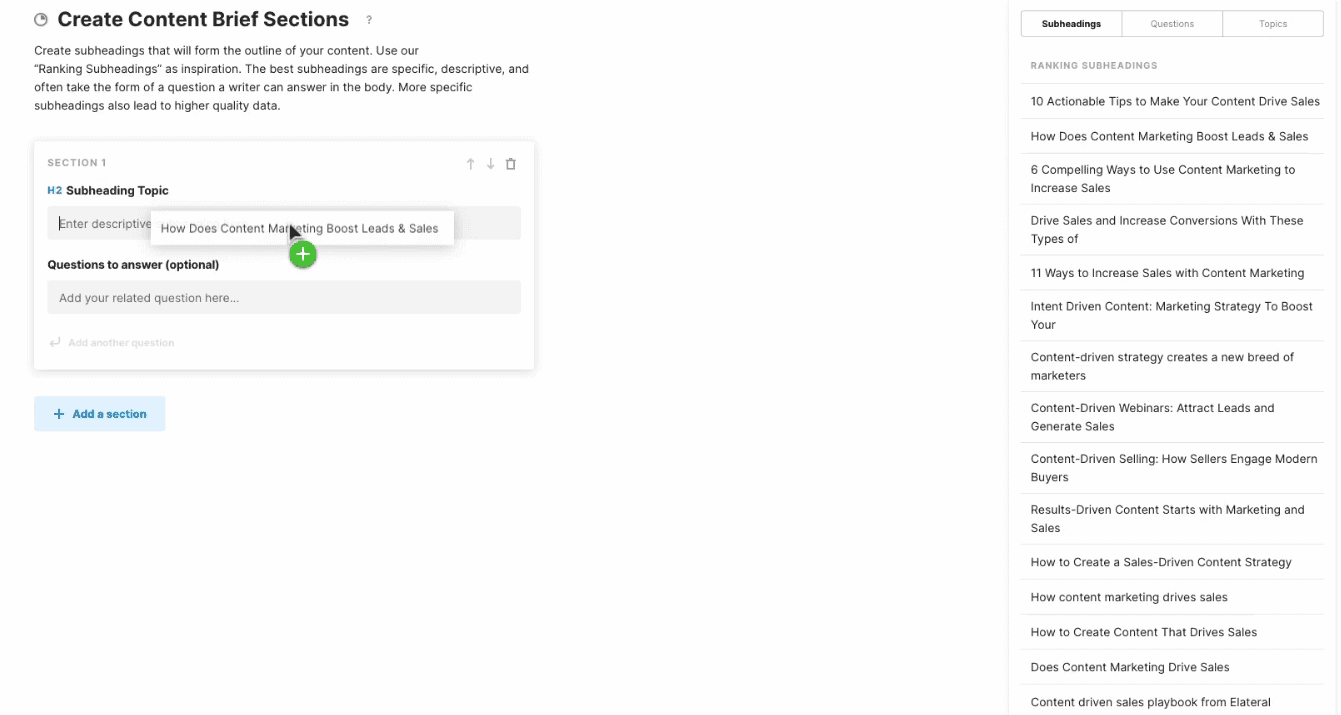The role of artificial intelligence (AI) is essential in today’s content creation world. If you run a content agency, you need the best tools to complete your work faster and achieve quality results.
That’s why an AI-powered content intelligence tool like MarketMuse is crucial for your business.
MarketMuse uses machine learning technology to generate content briefs to help you write a first draft smoothly. The platform is well-known for its popular Research, Compete, and Optimize applications.
For the sake of this guide, I’ll walk you through the Content Brief feature and how it compares to other content research tools on the market.
Here’s what you’ll learn:
Jump Ahead to a Specific Section:
What Makes an Exceptional Content Brief
You will have more success with your content strategy if you have clear guidelines on how to shape articles that meet user intent and are comprehensive enough to rank.
We refer to these guidelines as content briefs.
A content brief is a blueprint that contains a set of directions that highlight the most valuable areas to cover on a given topic.
Although the specific nature of content briefs will vary based on a client’s directive, search engine optimization (SEO) writers should consider the following 10 essential elements for effective content creation:
- Target audience — who’s going to read your article
- User intent — what readers expect to see in your content
- Primary keyword — what keyword you want the article to rank for
- Target word count — the suggested number of words to write (which will depend on the content’s depth)
- Target content score — the suggested level of optimization, calculated based on word count and keyword coverage
- Title suggestions — which titles are already ranking for the topic
- Questions to answer — what questions you need to answer to meet user intent
- Subheading suggestions — which topics or subheadings are already ranking for the keyword
- Related terms — what terms you can use to steer your content toward topical authority
- Links and research materials — internal and external webpages you should link to
There’s more to writing a first draft than just finding a topic to write about. And you shouldn’t just plug in keywords on a content optimization tool to generate a content brief.
Sound familiar?
You’ve probably seen various AI content features available on the market. You plug in a keyword, and a content brief is automated. But MarketMuse’s process is unique, and I’m thrilled to share what makes it different.
How To Use MarketMuse Content Brief
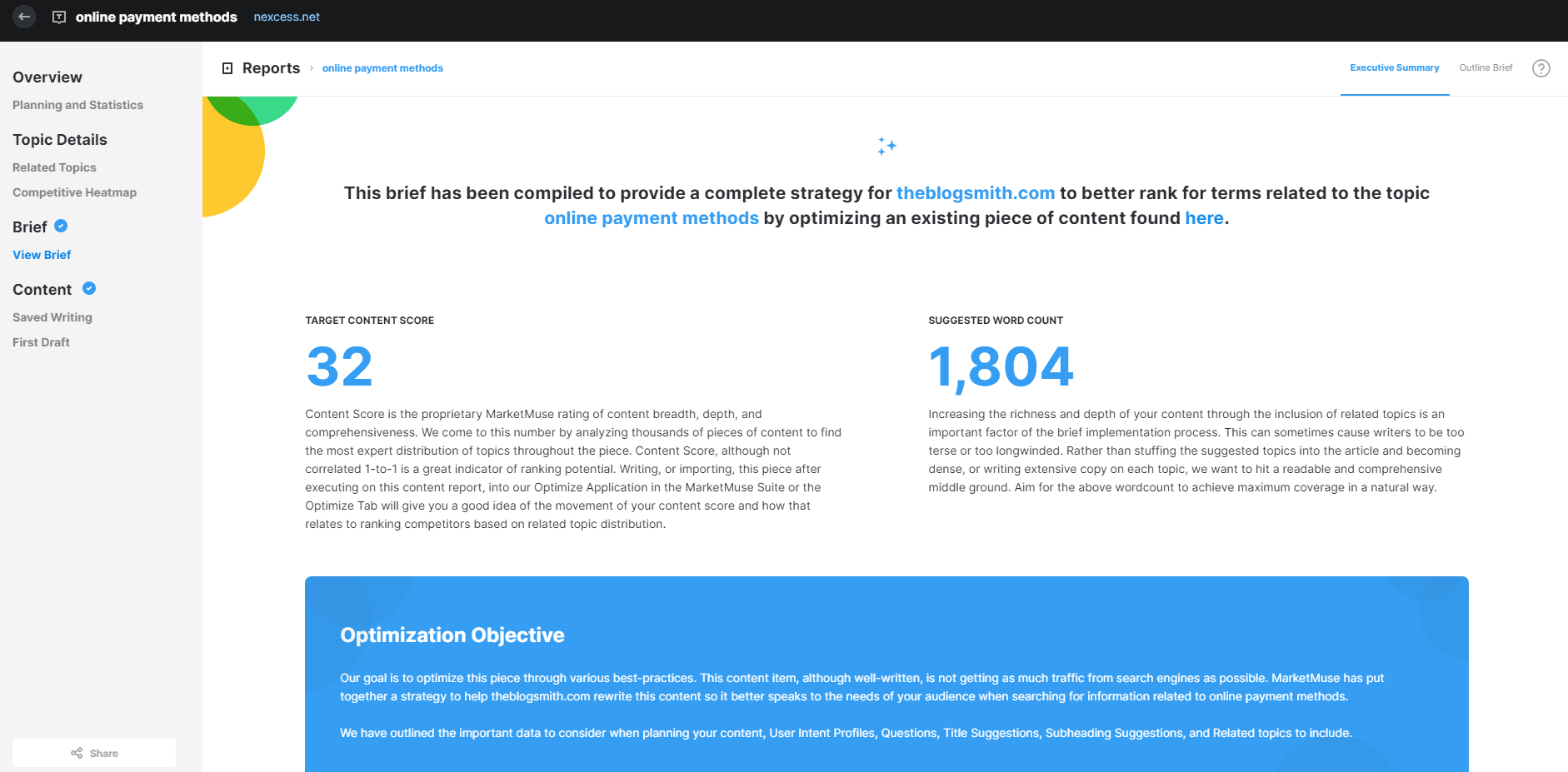
A MarketMuse Content Brief provides comprehensive data to complete the essential elements of high-quality content. The brief consists of an Executive Summary and an Outline Brief.
The Executive Summary shows the overall content plan and recommendations, while the Outline Brief consists of a more detailed structure to follow for each subheading.
Let’s go over each of the sections one by one to see how it’s done.
How To Order a Brief
First thing’s first — you’ll need to login to your MarketMuse account or create one if you haven’t yet already. You will also need to purchase one-off credits ($25/credit) or a subscription plan to order a MarketMuse Content Brief.
Once you’re ready, you can order a brief in a few different ways:
- Through the Inline Adder
- When selecting an Inventory Item
- When viewing Related Pages
- While viewing All Briefs
Let’s use the Inline Adder option to see where the Brief-related sections are located.
1. Head over to the Brief section and hit Order Brief.
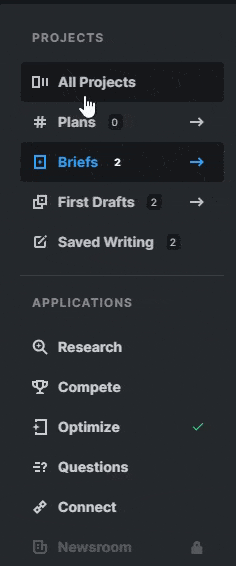
2. Fill in your keyword and a URL (optional).

3. Click Get Brief and Get First Draft (if you’re ordering one).
4. Hit the Finish button.
5. Confirm your order.

You can monitor the status of your order by looking at the Status Filters on the left navigation bar.
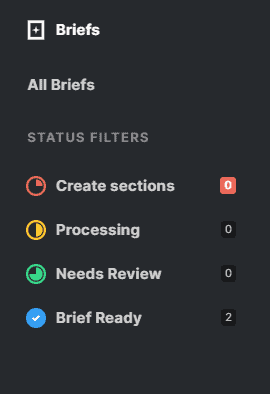
Self-serve members (purchased online) must select their titles and subheadings to finish the brief generation process, which I’ll show you how to do in the next step.
How To Customize the Content Brief
When your brief’s status changes to Create Sections, you can customize your content’s subheadings to make it unique.
MarketMuse uses the input from your chosen subheadings, so it’s important to carefully choose what exactly you want included in the brief. If a client has additional questions or topics they want to discuss in the article, you can include those and add as many subsections as necessary.
Once you’re done, just hit Confirm and Process Brief, then wait for your content brief to be prepared.
It’s certainly useful that MarketMuse empowers you to improve the quality of content when you choose the titles you want while also taking into account what already ranks.
But that’s not all MarketMuse Content Brief has to offer.
In most cases, content planning tools that use AI provide you with related topics and keyword recommendations.
So what makes MarketMuse different from the topic models it presents in the brief?
Subheadings Topic Modeling
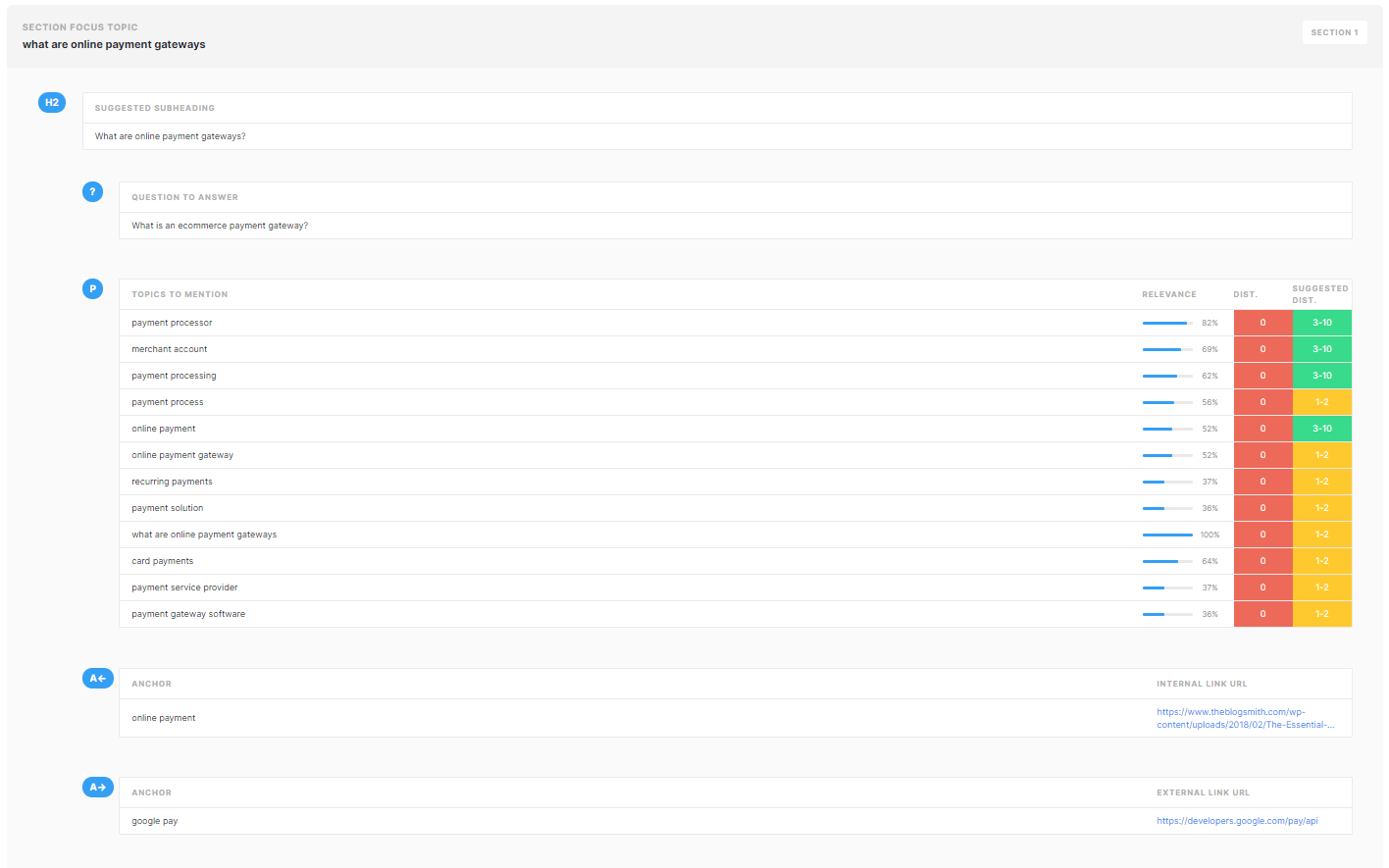
Once the brief is ready, you can review and edit it.
You will find information associated with each subheading that you select:
- Questions to Answer
- Topics to Mention
- Links
Each subheading follows its own topic model, which makes it easier to determining where to use them, instead of just guessing and distributing it wherever you see fit.
Additionally, the topics below the subheadings you set have hidden and non-hidden attributes.
Non-hidden topics have the greatest relevancy and are automatically added to the brief unless you hide them. Alternatively, you can unhide topics if you find any that are particularly interesting.
MarketMuse has many ways to improve your content based on its overall process.
You can:
- Get more high-quality brief through customized subheadings
- Get clear directions on where to mention a question or topic
- Eliminate guessing through the indicated markings for flagged topics
- Get more relevant suggestions from hidden and non-hidden data
How MarketMuse Content Brief Helps You Write Better First Drafts
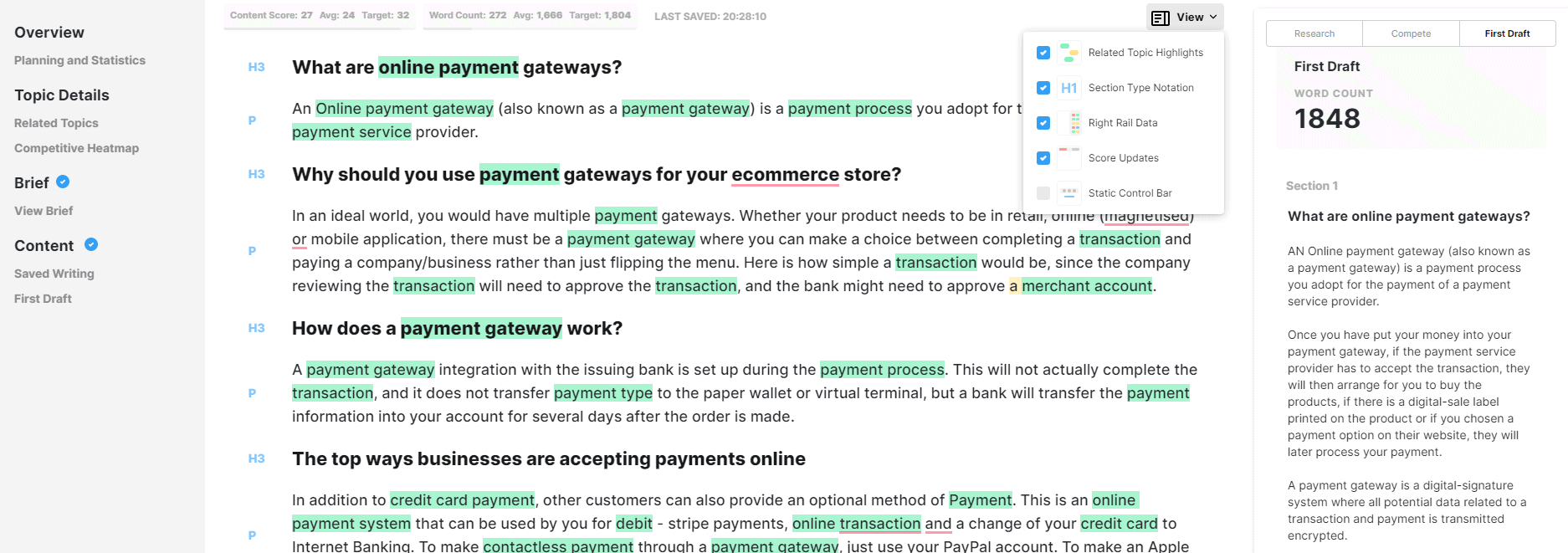
It’s essential to create a quality brief before writing a first draft. Make sure to carefully select the subheadings and topics that you want MarketMuse to analyze.
If you’re all set with the brief, you can now start working on a MarketMuse first draft.
How To Order a First Draft
There are three ways you can order a MarketMuse First Draft:
- Through the Inventory Adder
- Inside the Project Card for a topic
- Within the Content Brief list
In this example, I used the Project Card method. Simply click Get First Draft. The order confirmation window will appear, and you’re done.
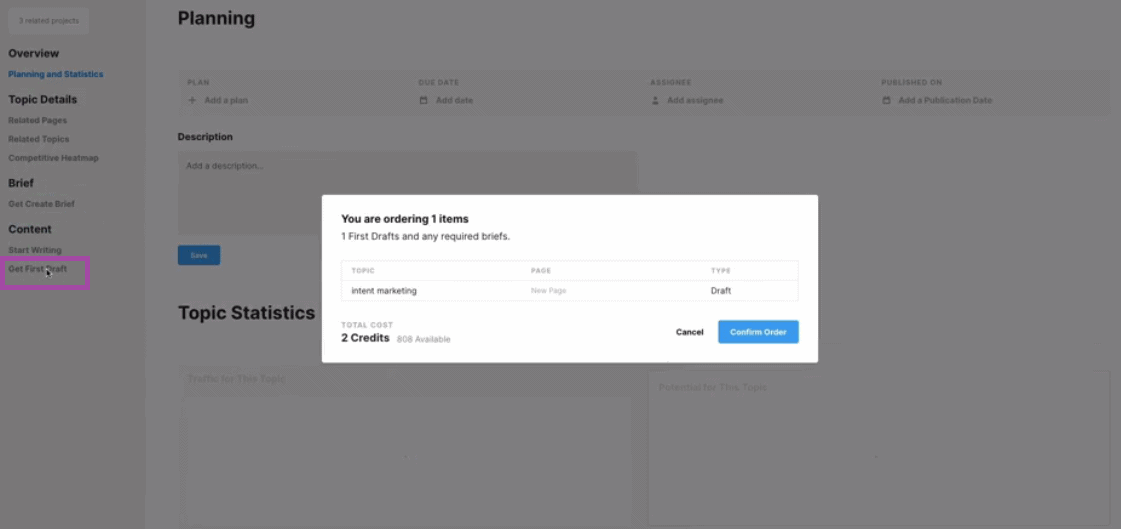
How To Find the First Draft
You can check the first draft’s progress in the Content Brief List section. Once you see the First Draft column is marked Completed, click the button to access it.

In the View Brief mode, go to the First Draft section and click the First Draft tab in the right corner.
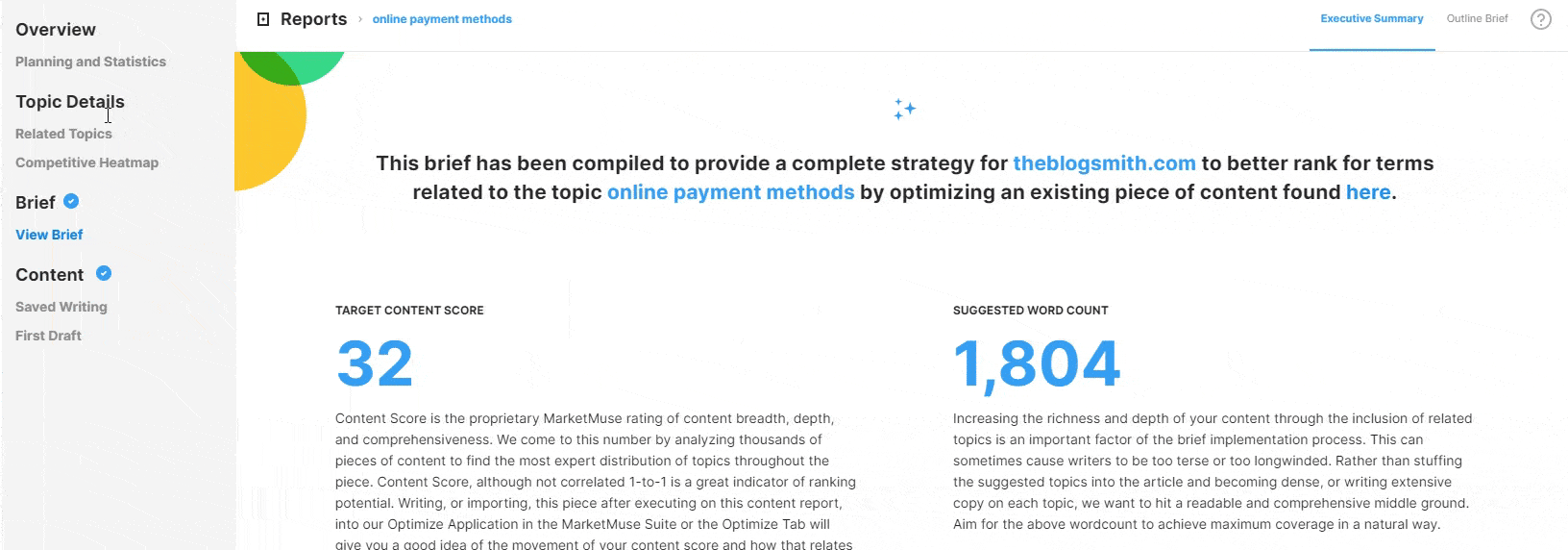
How To Use MarketMuse First Draft and Start Writing
You’re probably curious: what does a MarketMuse First Draft look like?
The First Draft contains all the subheadings you selected during the brief generation process. Note that if you didn’t take the time to select relevant subheadings, your First Draft results won’t be that impressive.
Each subheading also comes with suggested paragraphs that you can drag into the text editor. You can then customize these paragraphs when writing your first draft. They’re a great jumping-off point but not the ideal end point in the writing process.

While this process sounds more like clicking a “generate blog post” button than writing an amazing blog post, note that AI-generated content is never a replacement for human writers. Our role as content creators is to make the most out of these tools to improve our processes.
Content Efficiency With MarketMuse: Is It Worth It?
MarketMuse has a robust outline creation feature that is ideal for outsourcing topics to writers. It is well worth the cost for a fast-growing business or content agency.
MarketMuse’s Content Brief helps reduce potential miscommunication to relay specific directions from clients to your team. Their detailed content brief process makes it easier to provide your writers with all the information they need to produce high-performing content.
The MarketMuse First Draft can also speed up the writing process as it gathers insights to shape your topics.
But you shouldn’t rely on it as the final output.
The data is scraped from search engines for the purpose of briefing topic writing. Following this brief without adding anything of your own to it will result in cookie-cutter content that isn’t unique enough to hold a reader’s interest (or achieve business goals).
You don’t want your brand’s voice expressed solely by a piece of software, so take these inputs and craft your final draft using your own unique voice and message.
Final Thoughts — MarketMuse Guide: Crafting a Content Brief and First Draft
MarketMuse is impressive; a useful tool for generating content briefs that will save you time with research. Taken one step further, you can use MarketMuse’s AI-generated First Draft as additional insights for your final draft.
At The Blogsmith, we’re always on the hunt to find the best top-level tools to use at each content creation stage.
Wondering how else to improve your content writing processes? Try The Blogsmith’s content brief and editorial calendar template, or contact us to learn more about our content writing services.

